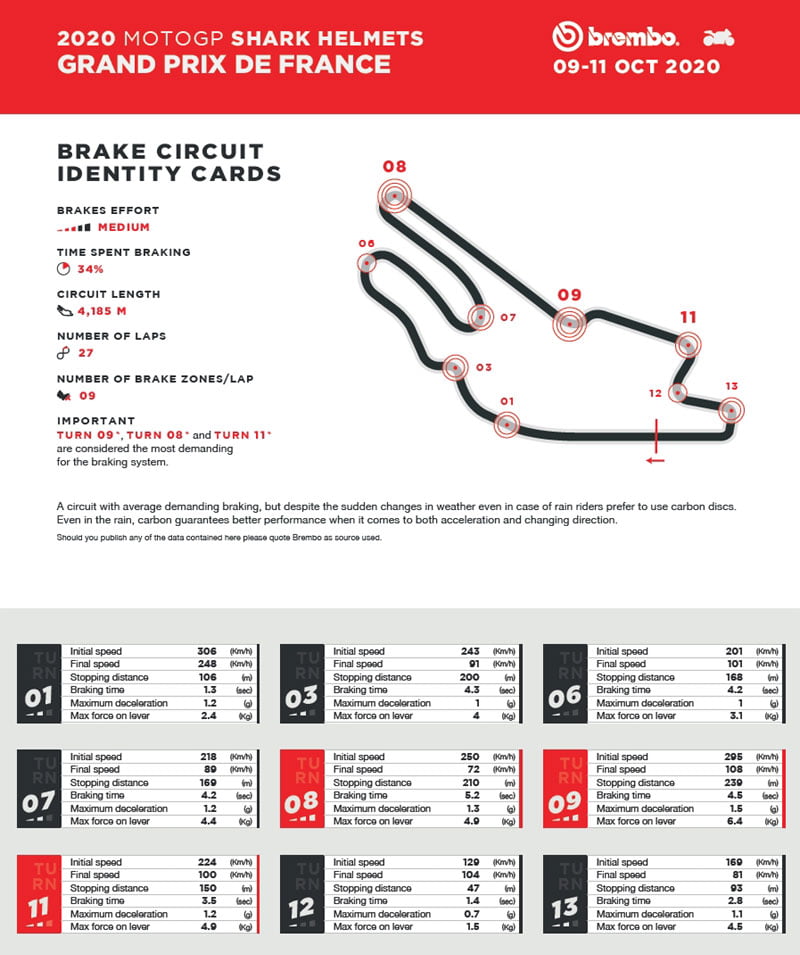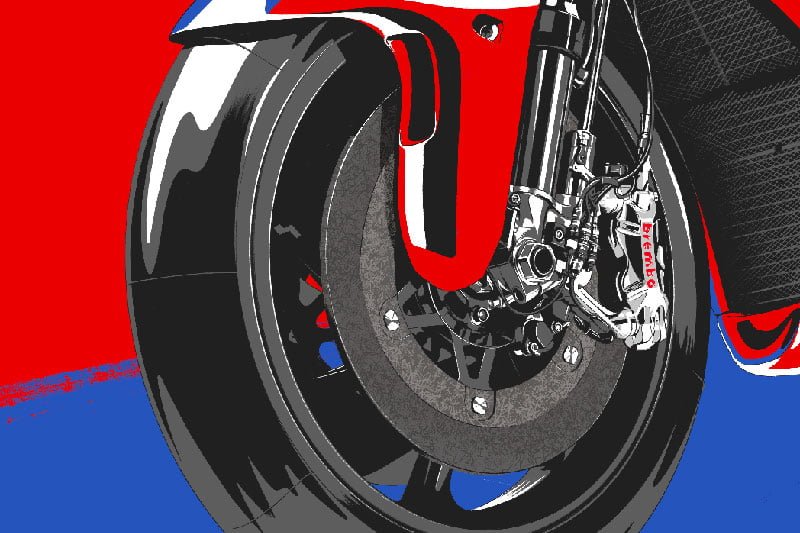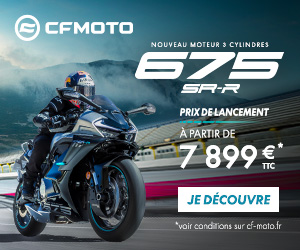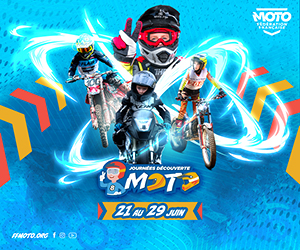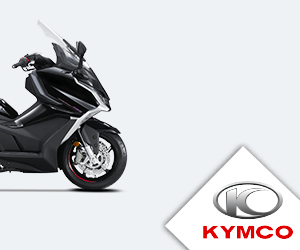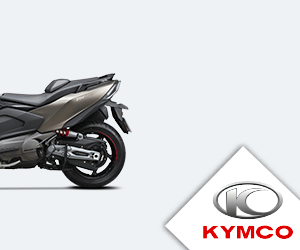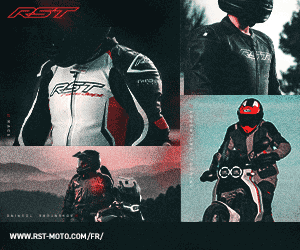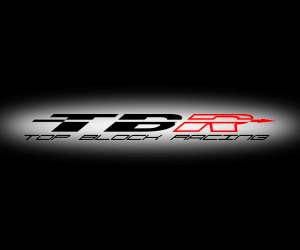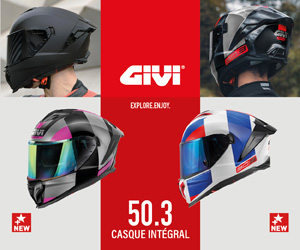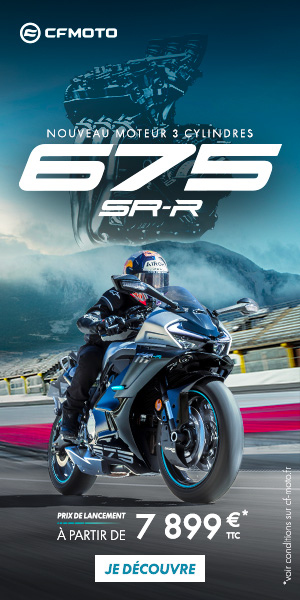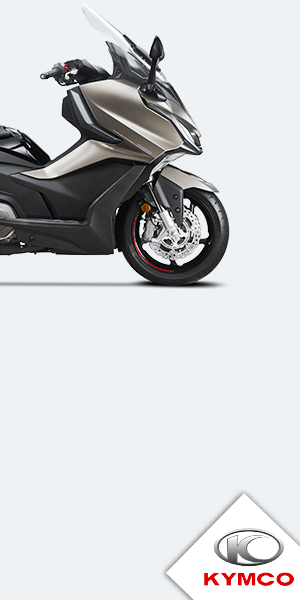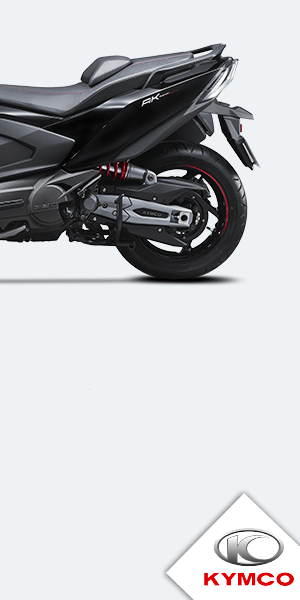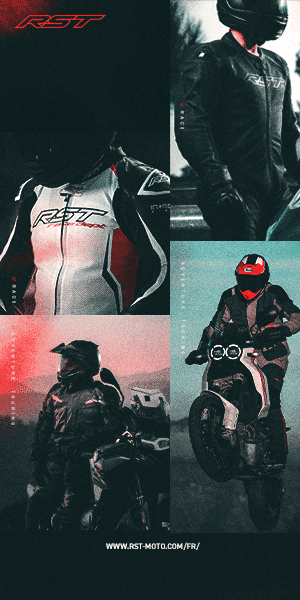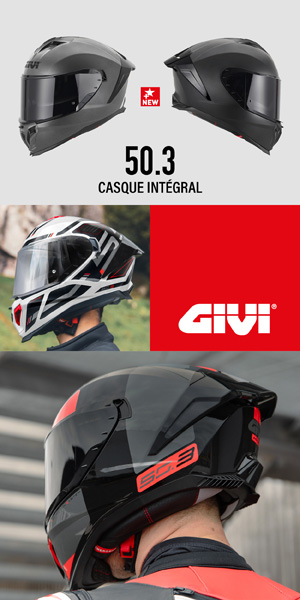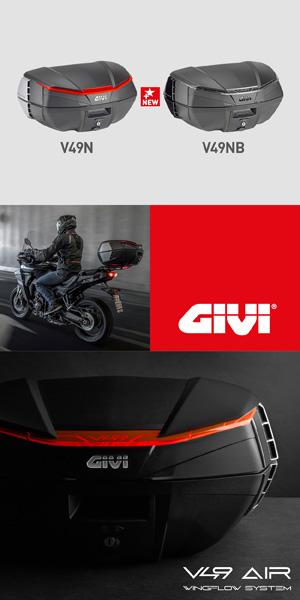According to Brembo technicians, who work closely with all riders in the MotoGP world championship, the Le Mans circuit is a moderately demanding circuit for the brakes. On a difficulty index scale of 1 to 5, it scored a 3, the lowest rating of any track this year, along with Misano Adriatico and Cheste (Ricardo Tormo).
The environmental conditions of October could convince riders to use carbon discs with a small braking band, to ensure the right operating range in terms of temperature. Even if it rains, the majority of riders will likely opt for carbon over steel.
Brembo carbon in MotoGP, whatever the conditions
Over the past three years, Brembo has put an end to a long-standing taboo: Since the introduction of carbon in the premier class, it had always been put aside in the event of rain in favor of steel discs. To ensure a good coefficient of friction, the carbon must reach a temperature of at least 250°C and, until recently, this was somewhat difficult in wet and rainy conditions.
However, Brembo's carbon developments have made it possible to extend the operating temperature range. This, along with improved engine and tire performance, allowed disc temperatures to rise even in the rain, meaning steel was largely sidelined.
Using the brakes during the French MotoGP Grand Prix
On each lap of the Le Mans circuit, drivers use their brakes 9 times for a total of 31 seconds, which is no small feat considering it is the second shortest track in the 2020 world championship The braking system is used for 34% of the race, tied with Jerez and Misano Adriatico.
On 8 of the 9 braking sections of the French track, drivers are subjected to a deceleration of at least 1 g, and on 5 of them the value is 1,2 g or more. During 3 turns, the brake system pressure exceeds 10 bars. The overall load exerted by each rider on the brake lever from start to finish is extremely high: 975 kg.

The most demanding braking section of the French GP
Of the 9 braking zones on the Le Mans circuit, 2 are classified as demanding on the brakes, 5 are of medium difficulty and the remaining 2 are relatively light.
The most demanding braking section for MotoGP is in turn 9 (Chemin aux Boeufs): The bikes go from 295 km/h to 108 km/h braking for 4,5 seconds, while the fluid pressure of brake reaches 13,6 bars. The riders exert a load of 6,4 kg on the brake lever, are subjected to a deceleration of 1,5 g, and in the meantime cover a distance of 239 meters.
